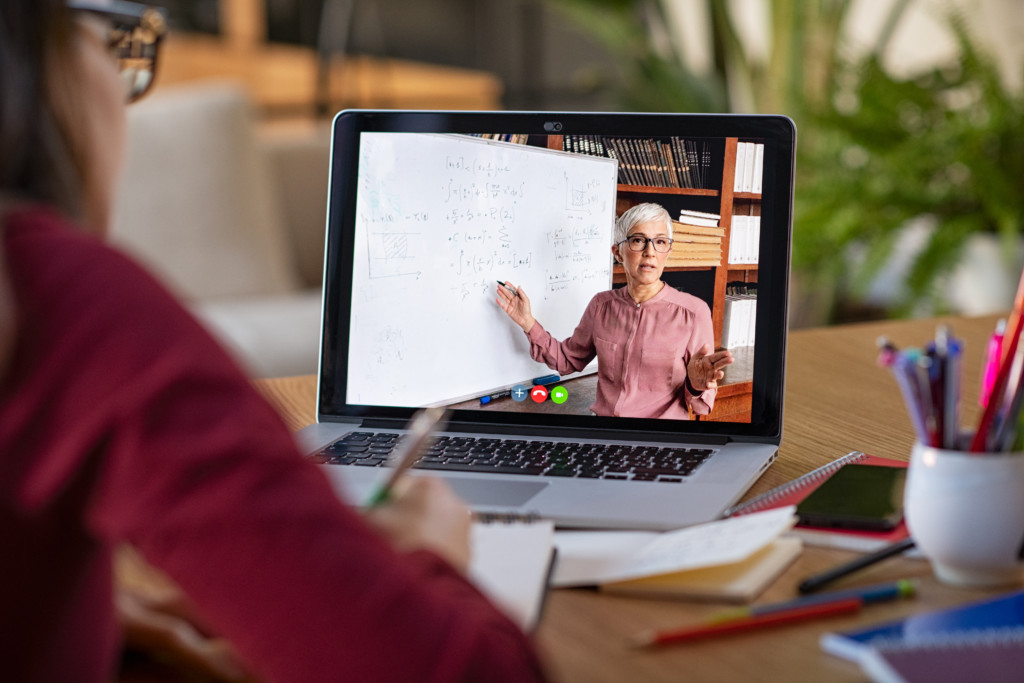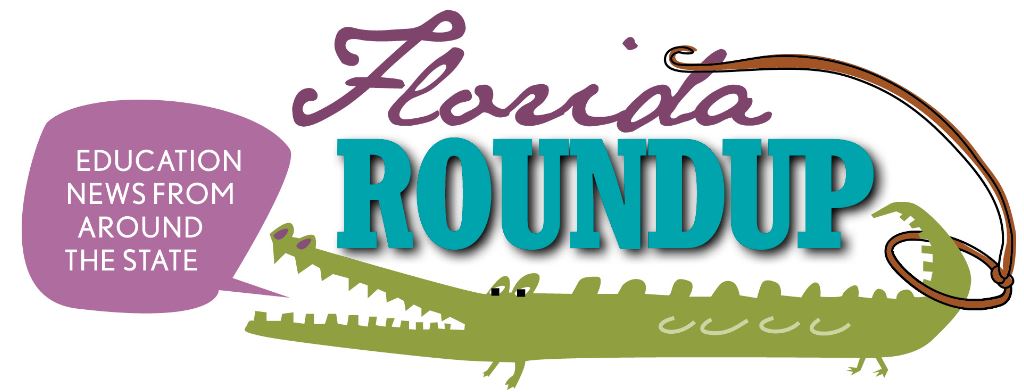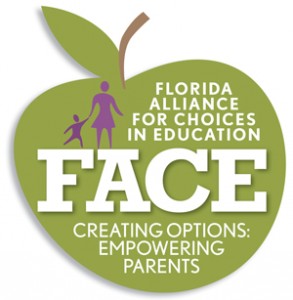 Online learning providers nationwide are enjoying unprecedented enrollment increases as families seek more education choice for their children amid the coronavirus pandemic, according to a story published today in Education Week.
Online learning providers nationwide are enjoying unprecedented enrollment increases as families seek more education choice for their children amid the coronavirus pandemic, according to a story published today in Education Week.
Virtual school providers cite a variety of reasons for the success they experienced even before COVID-19: comprehensive learning management systems, experienced teachers, and an emphasis on live teaching.
An additional reason for their success at this particular time, according to EdWeek, is longevity. The article points to Florida Virtual School, the nation’s first statewide online public school, as an example. Founded in 1997, FLVS’ enrollment is up 54% year over year for its individual online course offerings and 64% for full-time programs.
The creative vision of founding president Julie Young and her team, who grew FLVS from an Internet high school with 77 enrollments, has grown into a diversified, worldwide organization serving more than 2 million students in 50 states and more than 100 countries worldwide. Today, FLVS offers more than 190 courses, from core subjects such as English and algebra to electives such as guitar and photography. Available to both full- and part-time students, FLVS welcomes students from public, private, charter and homeschool backgrounds.
Like other virtual providers, FLVS ramped up to meet expected demand, hiring 320 new instructors and upgrading its servers over the summer. The expansion was made possible following Florida Board of Education approval in April of FLVS’ request to spend $4.3 million to boost capacity.
You can read the full Education Week story here.
 In this video special to redefinED, author and education reformer Michael Horn talks with education pioneer Julie Young, the founder of Florida Virtual School, a student-centered online-learning provider that focuses on competency based education rather than traditional seat time. Julie is now the CEO of Arizona State University Prep Digital, an online high school that offers an accelerated path toward college admission and the chance to earn concurrent high school and university credit.
In this video special to redefinED, author and education reformer Michael Horn talks with education pioneer Julie Young, the founder of Florida Virtual School, a student-centered online-learning provider that focuses on competency based education rather than traditional seat time. Julie is now the CEO of Arizona State University Prep Digital, an online high school that offers an accelerated path toward college admission and the chance to earn concurrent high school and university credit.
Horn and Young discuss the ways in which COVID-19 is a moment for teachers and families to transform learning. They also discuss a new online learning case study Young co-authored that has been published by the Pioneer Institute.
“Right now, it's about the fundamentals. Anything that is remotely filler needs to go away. What are the standards we need to meet to feel as if we have accomplished what we need for this school year? Let's look closely at that and focus our plans around it."
EPISODE DETAILS:
· How Arizona State University moved to full remote learning within 48 hours and the active role the university has taken in lending support to other schools
· What states and school districts should be doing to move from the crisis of shifting to distance learning toward a more stable, sustained distance learning future
· Preparing for a variety of fall schooling scenarios based on the virus’ effect, including continuing full-time remote learning for those who want it
· The benefits of mastery-based education models for students with unique abilities
· Incorporating social and emotional learning into the distance-learning model
LINKS MENTIONED:
ASU for You: Resources for every learner, at any age
Pioneer Institute – Case Study for Transition to Online Learning
Julie Young announced earlier this year that she would be stepping down as the head of Florida Virtual School, after more than 30 years in public education. Her announcement reverberated in education circles around the country, where she was recognized as a pioneer in her field and the "godmother of digital learning."
I sat down to talk with her about the early days of virtual education, the lessons she learned while it grew, and what the future might hold both for digital learning as a whole and for the institution she led for 17 years. The interview formed the basis of my profile of Young, which was published on redefinED Monday.
So the first thing I’m wondering is, why now?
I started thinking about it about a year and half ago. I started hinting to the team about a year and a half ago ... I just had something inside of me going, ‘Ok, we’ve done this. It’s in a really good place, and together this team has had the opportunity to have a huge impact on the field of education, and really the world of learning, and now what?’ I was asking myself the same questions and just feeling like there was something I wanted to do, and didn’t know what it was.
I’m really the type of person that when I’m in the middle of something, I’m all in. And so even thinking about it, for me, felt like blasphemy. I didn’t feel like I could explore other opportunities. I didn’t feel like it was the right thing to be thinking that while I was still totally engaged as CEO.
Looking out across the education landscape in Florida, there’s a lot of things that were maybe tried out 15 or 20 years ago that are now reaching maturity. What do you see in the virtual realm that are these signs of maturity – where FLVS can kind of grow on its own?
When we started, virtual education was this thing over here that was, I think, in many respects, to be feared by many. Intriguing to the business community, very intriguing to parents, but feared by the education community. When I look at it now, and I think about where we are, and I see that the school districts have their franchises and they’ve embraced virtual learning for their students – whether they’re using us to provide that or whether they’re using their own programs – to me really indicates that very soon, it’s going to be ubiquitous. Very soon, we’re not going to be asking kids, ‘Are you taking a course online?’ It’s just going to be, ‘I’m taking English,’ and people aren’t going to be paying attention to whether it’s English online or English in the classroom. And we’re there at the post-secondary level.
In addition, I think that the onset and the acceptance of the full-time virtual programs and the proliferation of those have really given students and families that additional opportunity, beyond Florida Virtual School, or within Florida Virtual School, to get a diploma.
I think you reach a point where there’s no turning back, and I think that we’re there. I think it’s going to look different every year. … Our student base – the students we serve – (is) potentially shrinking, and the district’s service (is) potentially growing, which really indicates that it’s permeating the status quo, so that we don’t have to do it all by ourselves. But we should look for the total population of virtual education in the state of Florida to be growing. And I think what Florida Virtual School’s value and niche going forward is and should continue to be is that we will continue to look for new ways to deliver virtual education, where we can work with students to determine, what’s the next thing? What’s the next learning opportunity that we haven’t thought of yet? We’ll be able to then move those ideas out into the masses as well. (more…)
Some of the seeds of Florida’s virtual education system were sown more than two decades ago, at a Fort Myers elementary school, where Julie Young was running an IBM Writing to Read lab.
Students in the lab at San Carlos Park Elementary would move from one station to the next, using computers to explore concepts in different ways, tailored to different modes of learning. It was, Young said, "a blended classroom on steroids,” but years before blended learning became the hot topic it is now.
When, a few years later, the Orange County school district tapped Young to help lead the institution that became Florida Virtual School, that background had already given her an idea of what was possible.
“I had the opportunity to see the technology advancing for several years before I started to do this,” she said in an interview. "You could see a bit into the future, and know that it was coming.”
And by now, it clearly has arrived. Young said that is one reason she feels comfortable stepping down in June after 17 years at the helm of an institution that helped pave the way for online education around the country.
What started as a $200,000 grant project has grown into an award-winning juggernaut that annually serves more than 200,000 students. Students in the state are now required to take at least one of their courses online before they graduate. Last year, the full-time virtual education program bid farewell to its first graduating class, of about 275 seniors.
In other words, Florida Virtual School, like virtual education more broadly, has blossomed into maturity.
Many hands led to the creation of FLVS – from educators like Linda Hayes, a Central Florida computer science teacher who helped come up with the original concept, to state education leaders like Frank Brogan and John Winn, who helped design the policies that sustained it.
But it was Young who guided the institution that became a new model for education – one that maximizes technology to customize learning for individual students, that focuses on competency rather than “seat time,” that links funding directly to student success, and that makes more than 1,000 teachers available to students 12 hours a day.
Jeb Bush, who was governor during the school's early growth, recently called Young the "godmother of digital learning." Another early supporter, former Florida House Speaker and now U.S. Rep. Daniel Webster, R-Orlando, recognized her 30 years in public education with a statement for the congressional record.
"It was really a far-sighted option that they put in place. I think Julie had a lot do with making that (possible)," said Tom Vander Ark, an author and venture capitalist who serves with Young on the board of the International Association for K-12 Online Learning. "It's just, from top to bottom, inventing a new form of education," he added. "It's still, 17 years later, the best example in the country." (more…)
Florida Virtual School. Longtime leader Julie Young is retiring. redefinED, Orlando Business Journal. Jeb Bush says she has "earned the rare title of visionary." Foundation for Excellence in Education.
Vouchers: House Speaker Will Weatherford wants to make Florida’s biggest source of tax dollars — the sales tax — available for private school vouchers next year. Palm Beach Post.
 Private schools: StateImpact Florida looks at why a Florida private school helps its staff stay high-tech.
Private schools: StateImpact Florida looks at why a Florida private school helps its staff stay high-tech.
Charter schools. The Lee County School District is attempting to recoup about $100,000 from a charter school network that shut down more than a year ago. Fort Myers News Press.
Catholic schools: About 30 students at St. Lawrence, a K-8 Catholic school near North Miami Beach, chant “No place for hate,” as they gear up for a schoolwide anti-bullying campaign. Miami Herald.
School choice: Giving students ‘full choice’ could reduce low-income families’ disadvantages, writes the Palm Beach Post.
School grades. Education Commissioner Pam Stewart wants a simpler formula. Florida Current. More from the Tallahassee Democrat.
Science: Despite a huge public investment aimed at creating a high-tech economy, Florida continues to lag the nation in many measures of scientific prowess, says the National Science Foundation. Palm Beach Post. (more…)
Julie Young, the longtime leader of Florida Virtual School, the nation’s largest public provider of online learning, has announced she is retiring.
Young, who served as Florida Virtual School’s president and chief executive officer for 17 years, called the experience “one of the greatest joys that I could have ever imagined."
“I believe that FLVS has made incredible strides toward transforming education worldwide, one student at a time, showing the world that if you put the student at the center of your decisions, provide them with a teacher who meets them where they are, and works tirelessly to take them where they need to be, educational miracles do happen,’’ Young said in a prepared statement released Thursday.
“After 30 years in public education ... it seemed the right time to begin a new adventure,’’ FLVS spokeswoman Tania Clow told redefinED. “It also seemed the right time for FLVS: there is a stable and quality leadership team in place, student outcomes are very positive, and an infrastructure for continued innovation and growth has been established.’’
Clow added Young has been presented with several opportunities, and will be pursuing those in the near future. “Of course, she will miss the FLVS family, but she is excited about what is ahead for her and the organization,’’ Clow said.
Young launched Florida Virtual School in 1997 as an Internet high school with 77 initial enrollments. Today, Florida Virtual School is an award-winning Florida public school district with five schools serving more than 410,000 enrollments. (more…)
 In 2010, Doug Tuthill took a look around and realized he was living in a new era.
In 2010, Doug Tuthill took a look around and realized he was living in a new era.
“Florida had this rapidly expanding portfolio of school choice options,” said Tuthill, the president of Step Up For Students, which administers the state’s tax credit scholarship program. “Yet there was little dialogue among the groups representing those choices. We weren’t talking to each other about what was working, what wasn’t, and why.”
Several important players in this bourgeoning movement recognized the need for more collaboration. Florida Virtual School and Step Up For Students, among others, wanted to see the school choice movement united, so they could learn from each other and talk through any differences.
Thus, FACE was born.
Florida Alliance for Choices in Education, or FACE, is comprised of more than 50 members, representing a diverse coalition of organizations dedicated to providing Florida school children with more educational options. Such organizations include National Coalition of Public School Options, Florida Charter School Alliance, Foundation for Florida’s Future, and StudentsFirst - all coming together with the belief that, as the FACE website says, “State policy should enable all parents to be fully engaged in their children’s education and to access those learning options that best meet their children’s needs.”
Step Up For Students (which co-hosts this blog) staffed the initial effort. Three individuals - Wendy Howard, a parent advocate from Tampa; Jim Horne, a former legislator and state education commissioner; and Julie Young, president and CEO of Florida Virtual School - spent a year facilitating outreach and diplomacy, eventually bringing all components of choice together in one organization.
Florida is the first state to do this. (more…)